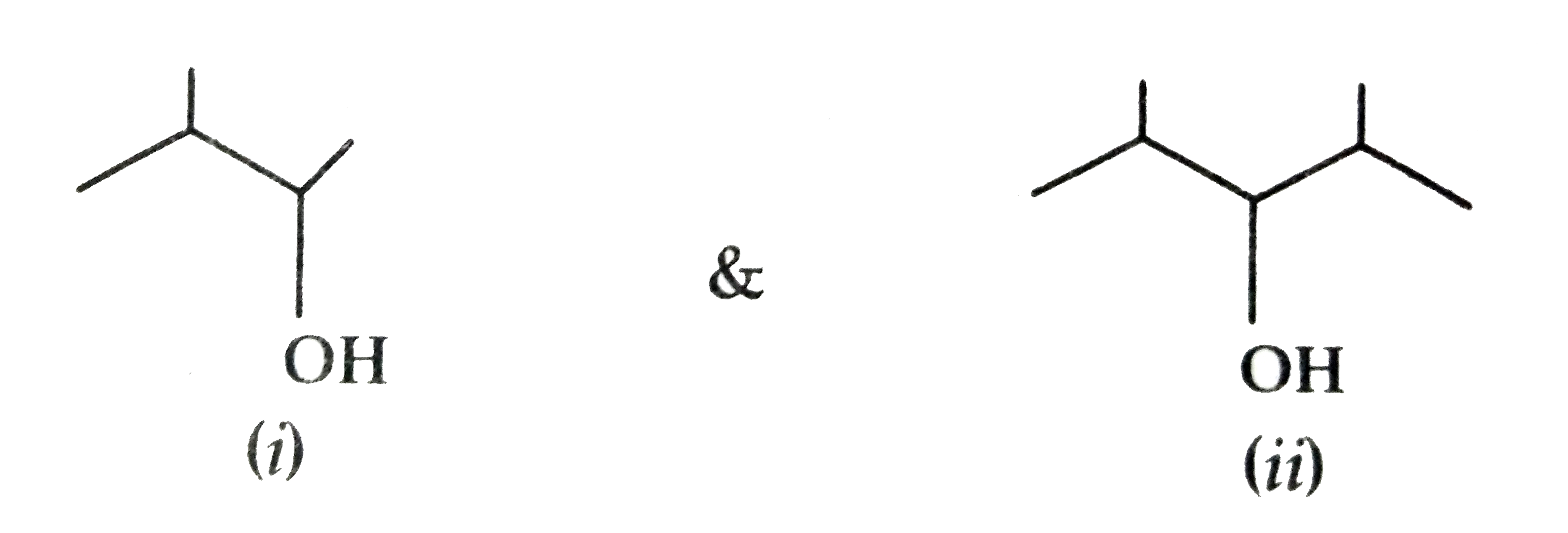Write the structure of alkene formed by the dehydrohalogenation of 1-Bromo-1-methylcyclohexane with alcoholic KOH.
To determine the structure of the alkene formed by the dehydrohalogenation of 1-bromo-1-methylcyclohexane with alcoholic KOH, we can follow these steps:
Step 1: Identify the Reactant
The reactant is 1-bromo-1-methylcyclohexane. This compound consists of a cyclohexane ring with a bromine atom and a methyl group both attached to the first carbon of the ring.
Hint: Draw the cyclohexane ring and place the bromine and methyl groups on the first carbon.
Step 2: Understand Dehydrohalogenation
Dehydrohalogenation is a reaction where a hydrogen atom and a halogen atom (in this case, bromine) are removed from adjacent carbon atoms. This reaction typically leads to the formation of an alkene.
Hint: Remember that in dehydrohalogenation, you are removing H and Br to form a double bond.
Step 3: Identify the Atoms to Remove
In 1-bromo-1-methylcyclohexane, the bromine is attached to the first carbon. The hydrogen that will be removed must come from a neighboring carbon. The neighboring carbon can be either the second carbon or the sixth carbon (due to the cyclic structure).
Hint: Look at the structure and identify which hydrogen can be removed to form a double bond with the carbon that has the bromine.
Step 4: Draw the Product
When bromine (Br) is removed from the first carbon and a hydrogen (H) is removed from the second carbon, a double bond forms between these two carbons. The resulting structure will have a double bond between the first and second carbons of the cyclohexane ring.
The structure of the product will be 1-methylcyclohexene, where the double bond is between the first and second carbon atoms.
Hint: Ensure that you maintain the cyclohexane structure and correctly place the double bond between the appropriate carbons.
Final Structure
The final structure of the alkene formed is:
CH3∣C=CCH2CH2 CH2−CH2
This structure represents 1-methylcyclohexene.
Summary
The alkene formed by the dehydrohalogenation of 1-bromo-1-methylcyclohexane with alcoholic KOH is 1-methylcyclohexene.
The reactant is 1-bromo-1-methylcyclohexane. This compound consists of a cyclohexane ring with a bromine atom and a methyl group both attached to the first carbon of the ring.
Dehydrohalogenation is a reaction where a hydrogen atom and a halogen atom (in this case, bromine) are removed from adjacent carbon atoms. This reaction typically leads to the formation of an alkene.
In 1-bromo-1-methylcyclohexane, the bromine is attached to the first carbon. The hydrogen that will be removed must come from a neighboring carbon. The neighboring carbon can be either the second carbon or the sixth carbon (due to the cyclic structure).
When bromine (Br) is removed from the first carbon and a hydrogen (H) is removed from the second carbon, a double bond forms between these two carbons. The resulting structure will have a double bond between the first and second carbons of the cyclohexane ring.
The final structure of the alkene formed is:
The alkene formed by the dehydrohalogenation of 1-bromo-1-methylcyclohexane with alcoholic KOH is 1-methylcyclohexene.
Topper's Solved these Questions
- HALOALKANES AND HALOARENESBOOK - DINESH PUBLICATIONCHAPTER - HALOALKANES AND HALOARENESEXERCISE - Higher Order Thinking Skills Questions
9 Videos
- HALOALKANES AND HALOARENESBOOK - DINESH PUBLICATIONCHAPTER - HALOALKANES AND HALOARENESEXERCISE - Some typical work problems based on coversions
6 Videos
- HALOALKANES AND HALOARENESBOOK - DINESH PUBLICATIONCHAPTER - HALOALKANES AND HALOARENESEXERCISE - Additional important questions
30 Videos
- GENERAL PRINCIPLES AND PROCESSES OF ISOLATION OF ELEMENTS BOOK - DINESH PUBLICATIONCHAPTER - GENERAL PRINCIPLES AND PROCESSES OF ISOLATION OF ELEMENTS EXERCISE - Brain Storming Multiple Chocie Questions
7 Videos
- HYDROCARBONSBOOK - DINESH PUBLICATIONCHAPTER - HYDROCARBONSEXERCISE - All Questions
493 Videos
Similar Questions
(a) Identify the chiral molecule in the following pair :

(b) Write the structure of the product when chlorobenzene is treated with methyl chloride in the presence of sodium metal and dry ether .
(c) Write the structure of the alkene formed by dehydrohalogenation of 1-bromo-1-methylcyclohexane with alcoholic KOH.
View SolutionWrite the structure of the alkene formed by dehydrohalogenation of 1-bromo-1methylcyclohexane with alcoholic KOH.
View Solution
Knowledge Check
The dehydrohalogenation of 2-bromobutane with alcoholic KOH gives-
Aonly 2-butaneBonly 1-buteneC2-butene as the major productD1-butene as the major productThe ease of dehydrohalogenation of alkyl halide with alcoholic KOH is-
A3∘<2∘<1∘B3∘>2∘>1∘C3∘>2∘>1∘D3∘>2∘<1∘
Write the structure of the alkene formed by dehydrohalogenation of I-bromo methyl cyclohexane with alcholie KOH
View Solution1-ethyl-1-methylcyclohexane
View Solution1-isopropyl-3-methylcyclohexane
View SolutionThe total number of alkenes possible by dehydrobromination of 3-bromo-3-cyclopentylhexane using alcoholic KOH is
View SolutionThe total number of alkenes possible by dehydrobromination of 3-bromo-3-cyclopentylhexane using alcoholic KOH is
View SolutionThe total number of alkenes possible by dehydrobromination of 3-bromo-3-cyclopentylhexane using alcoholic KOH is
View Solution
